The Inca civilization was a theocratic society that believed that politics and religion were intertwined. Their religion had features of fetishism, animism, and worship of nature gods symbolizing nature’s forces. Thus, most of their symbols were representations of nature.
It is difficult to pinpoint all the important symbols of the Inca Empire, which is still shrouded in mystery. What we can read now about their history was passed down through generations by teachings and oral stories. The records of Europeans differed. At the most, the modern world relies on archeology to learn about the Inca Empire.
Chakana

Chakana is a compound word made up of “chaka” (bridge) and “hanan” (tall). For the Incas, the Chakana Cross (Inca Cross, Andean Cross) was a bridge connecting three worlds: Heaven, Earth, and Hell (Death). The central hole represents Cuzco, the capital of the Incan Empire. On the other hand, the four arms represent the four elements of water, air, fire, and earth, the four compass directions, ad the four primary stars of the Southern Cross, which was a vital constellation because it was the center of the universe according to Inca’s belief.
The three steps of the cross represent levels of attainment of the human consciousness. The upper world of the stars, likewise defined by the condor, was the Hanan Pacha. The next level, the middle world or the Kay Pacha, was Mother Earth, with the puma as its representation. Finally, the Ughu Pacha, represented by the snake, was the underworld or death.
Viracocha

Viracocha was one of the most important symbols for the Incas because it was their supreme god. The Incas believed he was a creator god and the father of all the gods Incas worshiped. They thought he created the earth, living things, sun, moon, and the heavens. After finishing his work, he traveled the world, teaching humanity and the arts, leaving lesser deities to look after the human race. Viracocha has multiple representations, such as a puma, a sun crown man, or a humanlike man carrying two lightning bolts or staffs and standing on a platform. The tears on his face represent rain.
Several cultures and civilizations worshiped Viracocha. Only the Sap Inca or the emperor could worship Viracocha in the Inca Empire. The rest of the Inca people worshiped Inti, the sun god.
Urquchillay
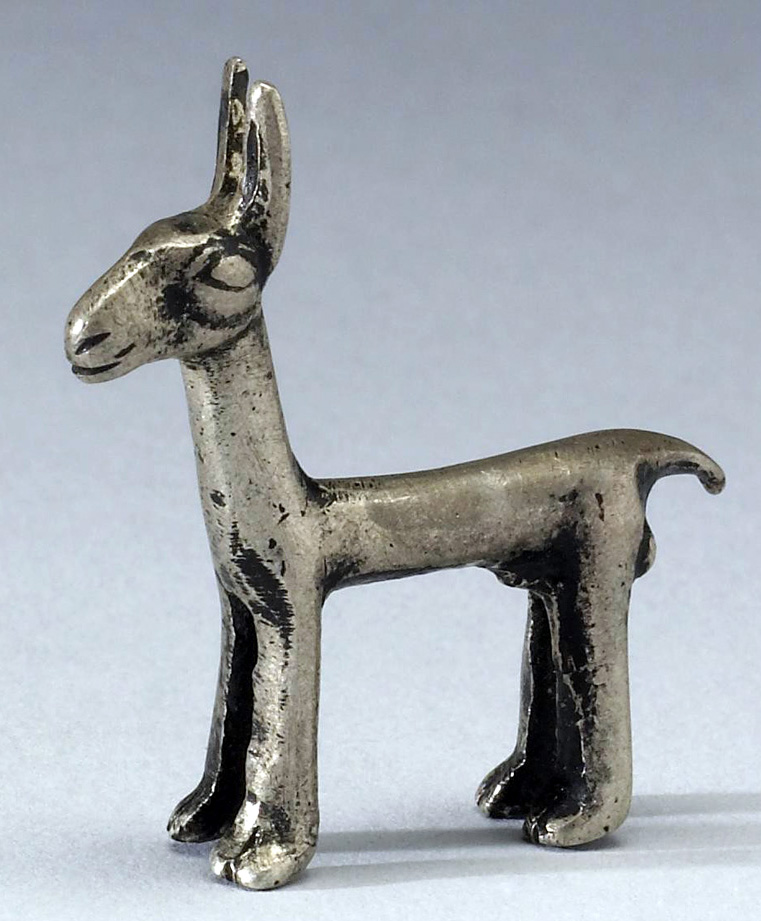
Urquchillay was a god important to Incan herders. With their fondness for llamas, Urquchillay, symbolized by a llama, watched over the Inca’s herds. The god was said to be the god of cattle and other domestic animals like the llama, and the Incan herders believed that he maintained the herds’ welfare and allowed them to multiply.
His representation was a strong man, but with a llama head. Sometimes he was represented as a ram or multi-colored llama, a symbol of wonder and life. He protected his believers and brought good fortune to them. In addition, he ensured their protection when they were in the wilderness.
Urcaguary

Urcaguary was the god of jewels, metals, and other valuable items found underground. The deity lived under the mountains and protected the treasures buried beneath them from evil people. The Urcaguary’s symbol was a god with a taruka (deer) head, a snake body, and a tail of gold chains and precious stones.
Supay

Supay was an important god to the Incas. It was the ruler of the demon race, the lord of the underworld, and the god of death. He was both an evil and good god. His symbol was a human figure with a likeness to a demon. He had long ears and horns, a feline-like head, discerning eyes, and very sharp teeth. However, for the people who tried to disrespect him, he could appear as a handsome man or a beautiful woman.
Incas created altars and gave offerings and rituals to Supay because they believed that the god protected the path the soul of the dead would travel.
Pacha Kamaq

Pacha Kamaq was another god important to the Incas. He was associated with earthquakes, clouds, the sky, and fire and is believed to be the second version of Viracocha. The Incas believed that one movement of the head of Pacha Kamaq could cause massive disaster. If the god moved utterly, it would end the world. Aside from being Earth Maker and Soul of the Earth, he was also known as the god of earthquakes. He required offerings often so he would not harm people. He was represented as a long wooden idol with anthropomorphic, ornitomorphic, and zoomorphic designs. Moreover, there were atmospheric phenomena, plants, and crops. In the upper part were two faces of Pacha Kamaq, with aggressive expressions representing his duality.
Mama Sara

Mama Sara was the symbol of the maize mother or the grain goddess. She was associated with the growth of maize. Aside from maize, Mama Sara was associated with willow trees. Her subjects included Sara Manka, the constellation in charge of plant foods, and Kuka Manka, the constellation associated with magical herbs.
Mama Killa
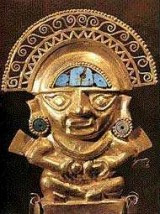
Mama Quilla, or Mama Killa, was Inti’s sister, consort, and moon goddess of the Incas. She was the patron of feasts and calendars as the Incas believed she was responsible for the passage of seasons and time. Moreover, Mama Quilla was the goddess of festivals and marriage. The Incas believed that she was the defender of women. They also thought a serpent or mountain lion attacked her when a lunar eclipse occurred.
Pachamama
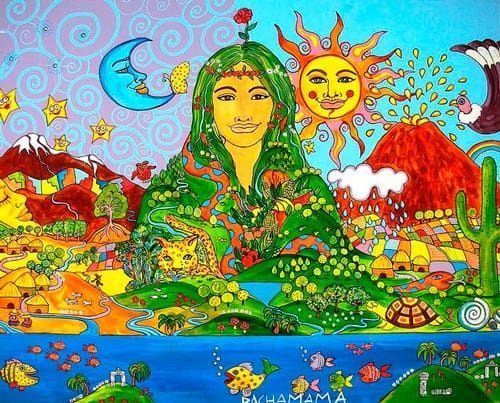
Pachamama was an important symbol of the Inca Empire. She was considered Mother Earth or Mother Nature, the mother of men and the hills, who cared for the material and spiritual things. She protected nature, provided food and water, favored earth’s fertility, and sheltered human beings. She received the greatest reverence because the success of the harvests of the entire empire depended on her. But she can also be hostile to people who do not respect nature, bringing unsuitable weather to grow food and earthquakes and droughts. Pachamama was the wife of Pacha Kamaq, and their children were Mama Quilla and Inti, the sun god.
Mama Qucha
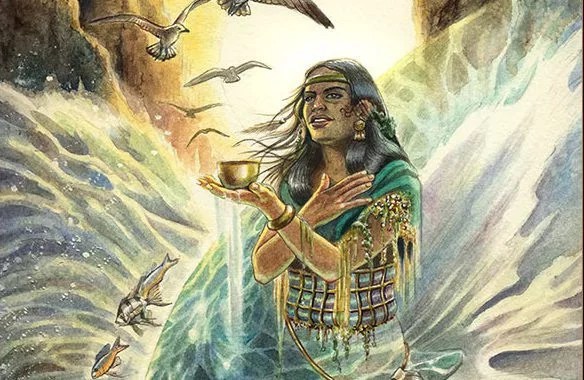
Mama Qucha was the fish and sea goddess. She was the protector of fishermen and sailors. The Incas believed that Mama Qucha ensured that fishermen always had plenty of fish. In addition, she calmed the seas and prevented storms. Mama Qucha was one of the elemental mothers of the Incas and formed the three phases of the moon together with Mama Quilla and Pachamama.
Mama Allpa

Mama Allpa was the symbol of the earth goddess, often portrayed with multiple breasts. She was responsible for the earth’s fertility and successful harvests. Incas believed she was a nourisher of life and a representation of the earth’s womb. The Inca Empire revered her because she ensured that there would always be a bountiful harvest since it was the responsibility of the empire to provide food for its millions of citizens.
Inti

The Inca symbol for the sun god was Inti, often described as a face on a gold disk surrounded by the rays of the sun, as Incas believed him to be the source of light and warmth. Inti had his temple, the Temple of the Sun, where the Virgins of the Sun and several priests served. Inti was the most crucial symbol among the Incas, who believed that they were the sun’s children, and their rulers or emperors were Inti’s living representatives. His representation in Inca art was always in gold, as a gold statue, gold mask, or a sun disk.
Illapa

Illapa was the Incas god of war and, likewise, the god of rain, thunder, and lightning. His representation depicted him as an imposing man with a bright gold garment decked with precious stones. He held a warak’a (sling) and a golden magana, the symbol of the trinity of lightning bolts, lightning, and thunder. Incas believed that the flash of his clothing represented lightning, while the crack of his sling was the sound of thunder. The sling stone represented the lightning bolt to break Mama Quilla’s water jug to bring rain to the land. As the Incas depended on agriculture, they needed rain for their plants to grow. Thus, Illapa was of the highest importance to them.
Illapa was one of the most important symbols for the Incas and had his place of worship across the Inca Empire.
Ekeko

For the Incas, Ekeko was their god of wealth and hearth. They made dolls representing the god and gave their desires to the doll, as the Incas believed the person could receive what he wanted. Ekeko was the god of prosperity and abundance. He was depicted as a man with a mustache who wore traditional clothing in the Andes. He carried baskets and bags of food and grain, household objects, and other things that would make one’s life prosperous and comfortable.
Catequil

Catequil, sometimes called Apocatequil, was the Inca god of lightning and thunder. He carried with him a mighty club and sacred spear. Incas believed him to be the weather god. Likewise, they thought he was an oracle who could foretell the future. He has a cult following, with Inca warriors carrying his symbol when going to war.
According to the records of the Augustinian priests who arrived in Peru in 1551, Catequil predicted the defeat of Atahualpa, the reigning Sapa Inca, when the Spanish arrived. The priests also recorded that Catequil criticized Atahualpa for ordering the killing of several people. When Atahualpa heard about it, he ordered the beheading of the high priest with whom Catequil had spoken.
Axomamma
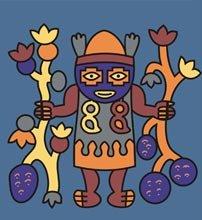
The Incas revered Axomamma, the goddess of potatoes. She was considered a neutral god who only took responsibility for helping the Incas cultivate their land and grow potatoes to replace maize as their principal source of nutrition. Incas believed that burying a potato with a dead person symbolized Axomamma’s blessing in the afterlife. Her symbol showed her wearing the Incan traditional dress, with each hand holding a potato stalk.
Amaru
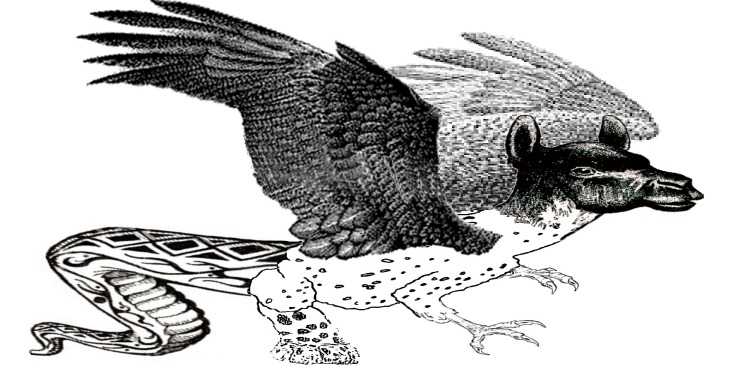
Amara was the Incas’ symbol of wisdom, representing the god as a dragon or winged serpent deity. It has various depictions; thus, it could have a fish tail, deer horns, llama head, reddish snout, and crystalline eyes.
The legendary and mythical god was associated with the economy of water and governed the irrigation of the Incas agricultural lands. He also ruled the water that runs through springs and rivers, which helped seeds of various crops to grow. He was also related to earthquakes, earth, and the underworld.
In other representations, Amaru could be a double-headed serpent. In some representations, he had the heads of a puma and a bird or a dragon’s feet and wings.